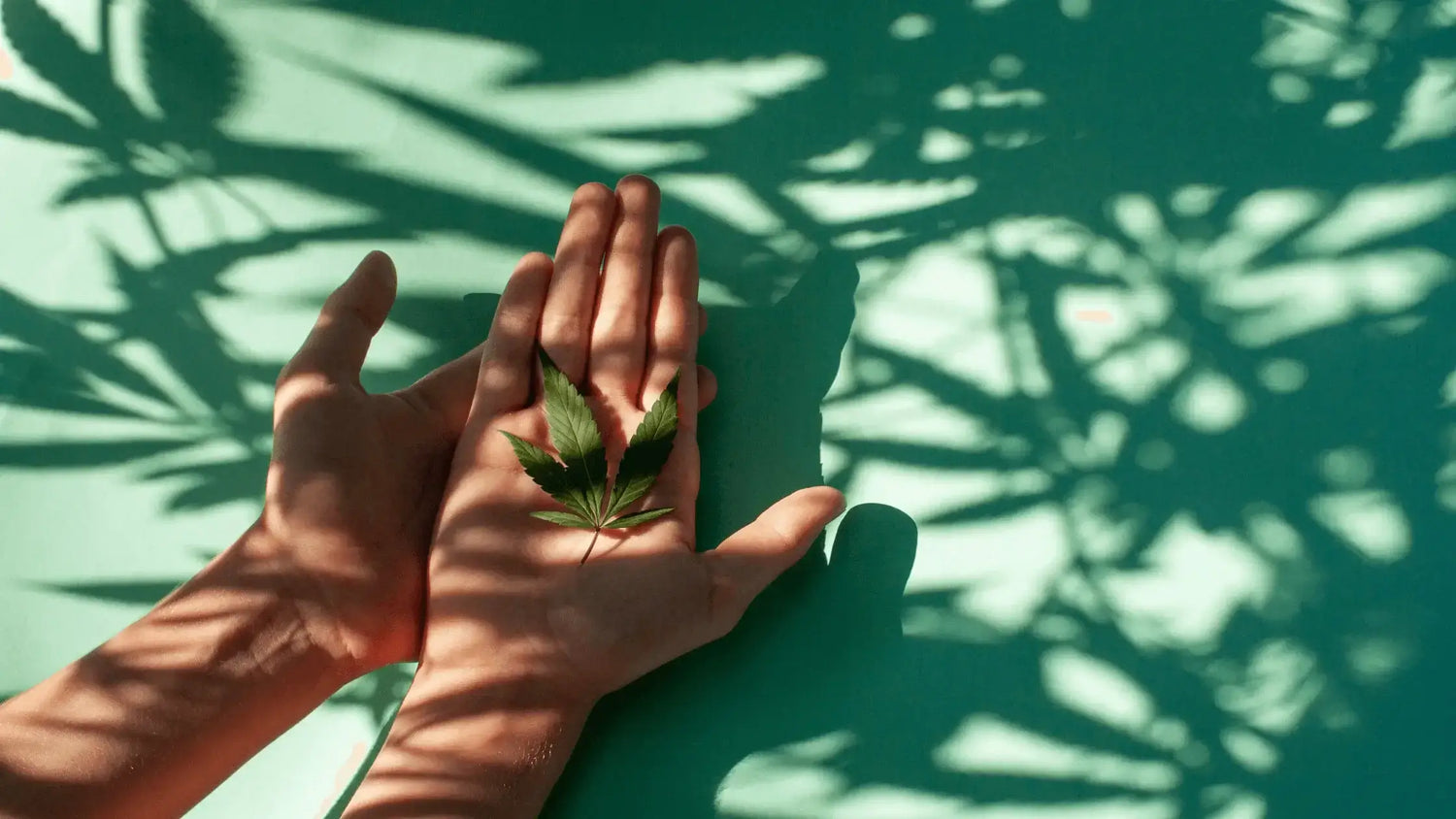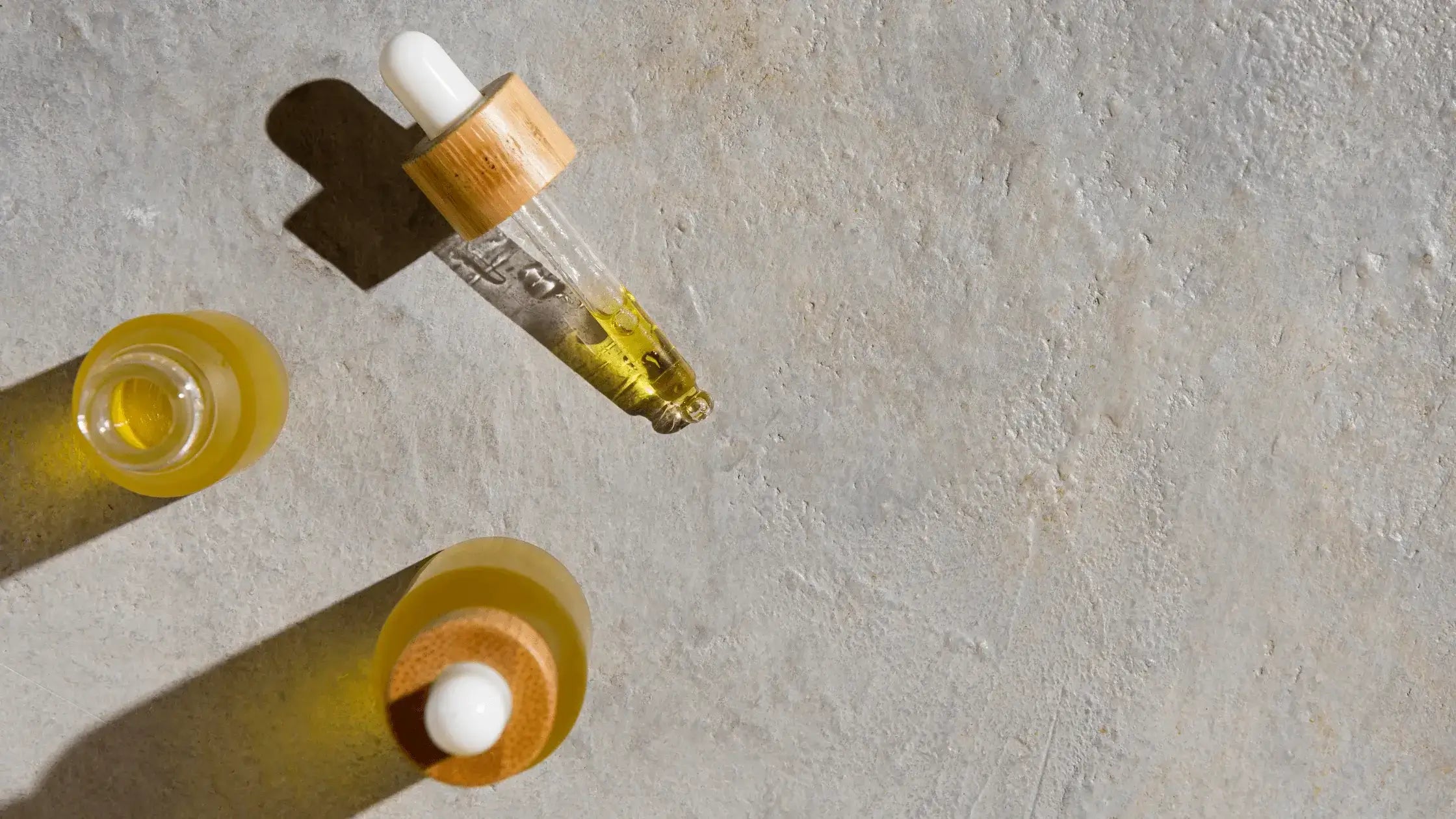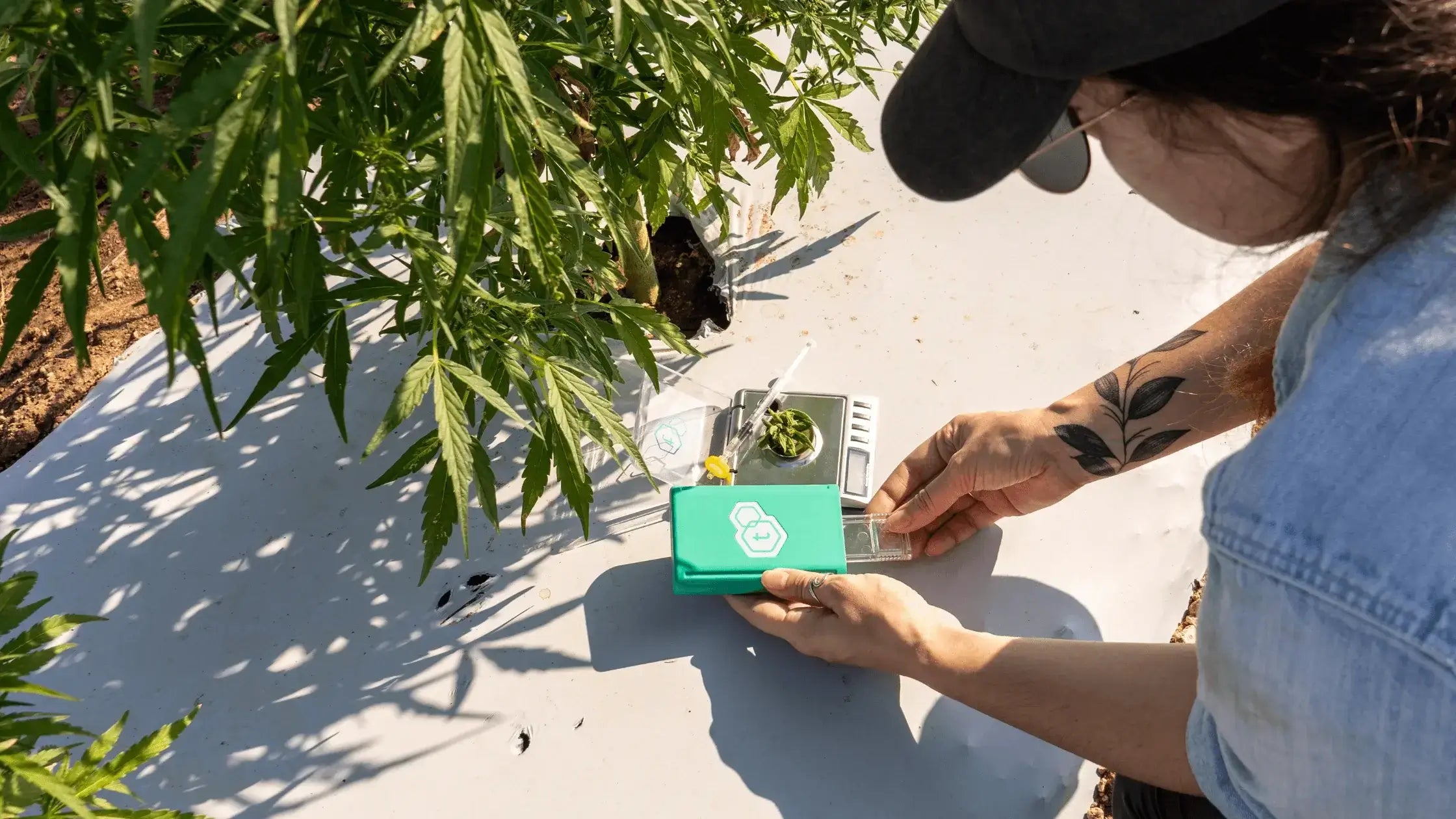So, You Want To Be A Weed Gardener? — A Guide For Beginner Cannabis Growers
The laws surrounding cannabis consumption get the most press in the national conversation, but there's an equally significant trend in the marijuana legalization movement: home-growing rules. While not every state that accepts cannabis lets users grow flowers indoors, more are opening up to the idea of responsible adults cultivating weed in a dedicated room. Recent statistics also suggest over 50% of young adults in the USA would try their hand at "indoor gardening" if weed were federally legal.
Essential Tips For First-Time Cannabis Growers
Aside from cost savings and quality, many cannabis fans get into cannabis growing because they think it will be a low-maintenance enterprise. After all, how hard could it be to grow a plant colloquially called "weed?" Although marijuana may not be the most challenging plant in horticulture, these strains won't reach their peak potential in a sub-par atmosphere. New growers need to know the standard strategies and pitfalls of pot growing if they want a successful harvest.
Review The Cannabis Stages Of Growth
Before traveling to a dispensary to pick up a packet of cannabis seeds, you must learn how a marijuana plant matures so you’re ready for every stage of its lifecycle. No matter what strain you opt for, it will run through the following phases:
Germination
The first step in a cannabis plant's life is known as "germination," which refers to the time when the white "taproot" pops out of a seed. Typically, growers place their seeds on damp paper towels and cover them with plates in this stage, but you could also put seeds directly in a starter medium or in a glass of filtered water. It's just easier to monitor seeds each day under plates, and there's typically a higher success rate since you're giving them plenty of darkness and dampness. If you don't notice the taproot after about one week, you could consider the seeds ineffective and toss them in the trash. Otherwise, carefully put your germinated seed in a starter medium to begin the seedling phase.
Seedling
After planting germinated seeds in a starter pod, water it gently each day with a spray bottle and wait for tiny shoots to emerge. These delicate seedlings initially have rounded "cotyledons," which eventually fall away as they reach higher and begin to form the iconic fan leaves. Once seedlings have about five or seven sets of serrated fan leaves — which usually takes about three weeks — it's said to be in the "vegetative stage."
Vegetative
Vegetation is the "puberty" stage for pot, and you'll notice the most rapid vertical growth during this period. Interestingly, you control how long vegetation lasts by your lighting schedule. Since cannabis is a photoperiod plant, it won't transition out of vegetation until you switch from an 18/6-hour light schedule to 12/12 hours. Believe it or not, there are some cannabis plants kept in "perpetual" vegetation so gardeners can snip samplings to use as clones. Although the ideal vegetation varies depending on the strain, it usually lasts about eight weeks.
Flowering
After switching to a 12/12 light schedule, cannabis plants start to turn their energy away from growing and concentrate on producing big buds — as long as you have unpollinated feminized plants (more on that below). As the resinous buds appear on a flowering plant, you must inspect the shiny "trichomes" to determine the best time to harvest them. Use a jeweler's loupe or a powerful microscope to determine the colors in these trichomes. Generally, you want to see most of these trichomes milky-white with about 20% - 30% orange before you think about cutting the buds off for drying and curing. Whatever you do, don't cut cannabis plants when trichomes are primarily translucent, as these buds don't have high concentrations of cannabinoids.
Know How To "Sex" Your Cannabis Flowers
As hinted above, cannabis could be either male or female (and, in some instances, a hermaphrodite), but growers only care about feminized varieties. Why? Unpollinated female marijuana plants are the only ones that produce buds with high traces of cannabinoids. Therefore, you need to ensure the seeds you purchase for a cannabis grow are already feminized to avoid a wasted grow experience.
If you're growing regular rather than pre-sexed seeds, you must know what to look for to get male plants out of your grow room ASAP. During late vegetation and early flowering, inspect between the branches and the central stalk for either "strings" or "balls." As you might've guessed, the pollen ball sacs are male plants, while the strings indicate female plants. If you leave the male plants in your grow space too long, these sacs will release pollen and impregnate the female plants, which causes them to send most of their energy to producing seeds rather than juicy nugs.
Prepare Your Space For Plants And Equipment
Now that you know the general timeline and expectations for a cannabis grow, you need to consider where you're going to set up your grow space. Most cannabis plants enjoy warm Mediterranean or tropical climates, so you must create this atmosphere in your grow tent or closet for the best results. You also need to research the average height for your preferred cannabis strain and measure whether you have enough vertical space to fit a grow light (fluorescent, HPS bulbs, or LED panels), ventilation units, a fan, and a pot in your area. The more space you have, the better, but focus on shorter indica strains or autoflower varieties if you're living in cramped quarters. Sativa strains have a greater reputation for growing super tall, so they're more challenging to manage in tiny grow tents.
Explaining Autoflowers — Every Beginning Cultivator's Best Friend
Although some in the cannabis community have mixed opinions on the quality of autoflower varieties, starting with a feminized strain in this category is strongly recommended for beginner cultivators. Why? Well, autoflowers tend to be more resilient, easier to manage, and quicker to flower.
The primary difference between autoflowers and standard indicas, hybrids, or sativas is that an auto isn't a photoperiod plant. Instead, autoflowers have traces of another cannabis strain called "ruderalis," which evolved in harsh environments like Siberia. Since Cannabis ruderalis couldn't rely on the sun to decide when to switch to flowering, it automatically transitions out of the vegetative stage within about 3 - 6 weeks.
Generally, auto strains are less maintenance than photoperiod cannabis hybrids, and they usually don't grow as tall as other strains. The fact that autoflowers switch to flowering on a pre-set timeframe makes them fast growers and lower maintenance, which is excellent news for new cultivators. Autos also tend to be more forgiving for beginner errors, meaning you have a higher success rate, even if you're a bit sloppy with your technique.
On the downside, autoflowers tend to yield less than photoperiod strains, and some argue the potency in autos is lower than traditional weed. However, the only way you can know how much THC or CBD is in your autoflower plants versus other strains is to use a home test unit like tCheck. Sometimes, autoflower varieties can have high potency scores, so don't assume these weed hybrids will be "less intense" than their photoperiod counterparts.
Bottom line: It's typically more accessible for new growers to start with autoflowers because they're sturdier, less maintenance-intensive, and easy to manage in small settings. Consider getting a few successful autos under your belt first before experimenting with more challenging photoperiod varieties.
A Few Common Beginner Grower Mistakes To Keep In Mind
Although there's a plethora of weed cultivation information online, it's still common for new cultivators to run into problems on their first few tries. As with any other skill, it takes first-hand experience (and plenty of mistakes) to become a master marijuana cultivator. However, there are a few standard rookie mistakes in cannabis growing circles you don't have to learn the hard way. Keep these tips in mind to reduce the odds of a bad harvest.
Overwatering
New cultivators (and frankly, every person who has had a plant in their home) often fear their cannabis plants will die of thirst rather than drown under too much H2O — but the latter case tends to be the more likely scenario. Most cultivators tend to water their cannabis plants more than necessary. Watering every 2 - 3 days is a good rule of thumb in vegetation and flowering, while daily mistings in the seedling stage are usually suitable. However, you must use your index finger as your guide to gauge the dryness of your soil and determine when it needs water. Also, don't forget to frequently check the drainage in your pot, and consider using a moisture meter for precise estimates of your soil's dampness.
Overfeeding
Along with overwatering, it's common for new cultivators to suffocate their cannabis plants with way too many nutrients. As long as you aren't using inert materials (e.g., coco coir) as your grow medium, you don't need to give the manufacturer's recommended vegetation or flowering nutrient blends, as the soil should have a decent amount of micro and macronutrients. Start with giving half the recommended dose of nutrients unless you notice clear warning signs of a deficiency. Watch out for red flags of overfeeding cannabis (aka nutrient burnout) like bright tips and bending fan leaves, and discontinue nutrients for a few days to drain excess chemicals.
Neglecting pH testing
New growers often worry more about nutrients than testing their soil's pH levels. Interestingly, in many cases where people diagnose a "nutrient deficiency," they actually have an unsuitable pH in their soil for proper nutrient absorption. The ideal pH for cannabis soil is slightly acidic at 6.0 - 7.0, so be careful to monitor fluctuations and use pH correctors whenever required.
Poor Sanitation Practices
It's easier for nasty bugs from the outside world to contaminate cannabis plants if you don't clean yourself before entering your grow area. Cannabis is particularly vulnerable to mold and mildew, and you never know when pests might cling to your hands or clothes as you enter your tent. Get in the habit of washing your hands and wearing face masks and gloves while working with your marijuana. You should also sanitize all equipment (e.g., pruning shears or scissors) with isopropyl alcohol before using them in a grow space to avoid contamination. Lastly, it’s best practice to use carbon air filtration and ventilation for proper airflow to reduce the incidence of issues like mold.
Add Potency Scanning To Your Cannabis Grow Checklist
Testing cannabis potency levels isn't a "standard" step in the cultivation process, but every home grower should add it to their routine. After all, there's no way to get a preview of your weed's expected effects if you don't know the average concentrations of cannabinoids like THC or CBD.
Thankfully, you don't need to send cannabis to expensive laboratories for a thorough cannabinoid analysis. With a tCheck tester, you can get an accurate read on your weed cultivar's potency from the comfort of your home. Find out how tCheck testers provide precise and fast potency reports on this link.














